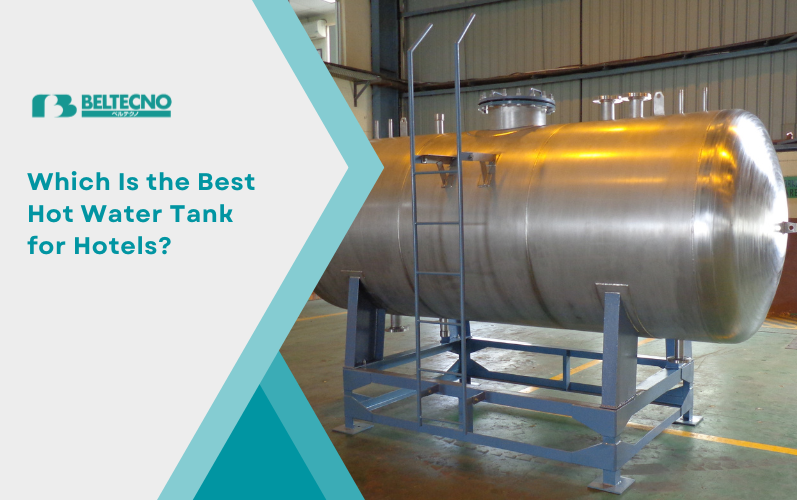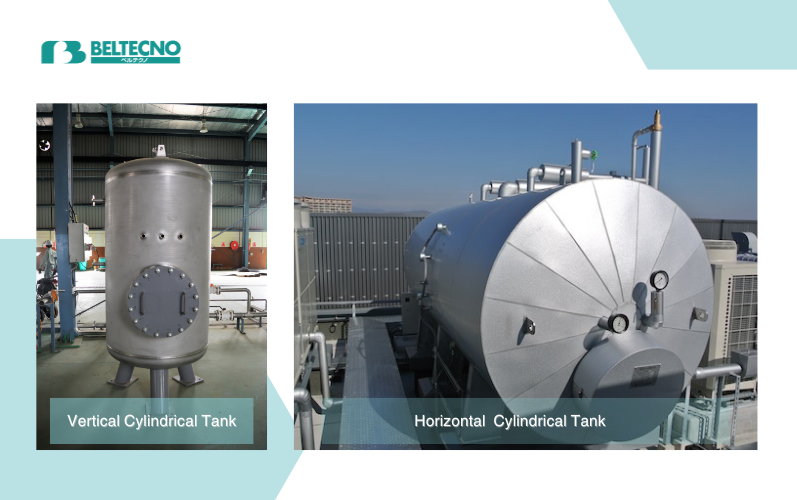The Best Hot Water Tank for Hotels and How to Choose It

Do you remember the last time you went to a hotel and did not use the hot water showers, spas, or swimming pool?
You might not be able to think of any time, right?
Hot water has become the ultimate need of hotels. The hospitality industry relies on continuous and efficient hot water supply for guest rooms, kitchens, spas, laundry, and swimming pools.
However selecting the right hot water tank for hotels can be a challenge depending on factors like hotel size, guest capacity, and operational efficiency.
In this blog, we will be reading about which is the best hot water tank for hotels, and how you can overcome common water storage challenges.
Before revealing the solution, let’s first have a look at the common water supply challenges in the Hotels.
Challenges in Hot Water Supply for Hotels
-
High Hot Water Demand Based on Hotel Size
Hotels have a high demand for hot water, these demands often vary with the size and capacity of the hotels. Luxury and large hotels that have more than 200 rooms require huge hot water storage tanks.
Mid-sized hotels that have 50-200 rooms need efficient heating and moderate storage to balance the overall costs and hot water supply. And lastly, small hotels that have less than 50 rooms require modular water storage tanks to save space and cost.
Normally in hotels, the peak hour is from 8 am to 10 am when most of the people including the guests and staff, use the heated water for their routine activities. So, it becomes essential to have a continuous supply of hot water at that time.
-
Hygiene and Safety Requirements
The safety of the guests is critical for the hospitality industry. Hotels with poor sanitation and hygiene can face consequences such as heavy penalties, a bad reputation, or even hotel shutdowns.
Hotels must comply with water safety standards to prevent bacterial contamination. So what could be the possible solution for this?
SS hot water tanks are the best option in this situation. Stainless steel is non-corrosive, easy-to-clean material that prevents any kind of bacteria buildup on the tank surface.
Also, read about Beltecno Food Grade Stainless Steel
-
Space Constraints for Installation
Unlike luxury and mid-range hotels, small hotels require a compact-sized water tank that saves their cost and space. For hotels like these, lightweight and space-saving water tank designs are the best option.
Another option can be a customized water tank. It can be tailored according to your space and capacity needs.
These solutions ensure a continuous supply of water without changing the hotel infrastructure or disrupting daily activities.
Read about how Beltecno Modular Water Storage Tanks solve space constraints.
-
Maintenance and Downtime Risks
Hot water tanks made out of poor materials require frequent maintenance due to cracks and leakages. Frequent maintenance disrupts hotel operations and can be frustrating for the guests.
Frequent repairs or replacements can also increase the overall acquisition cost of the water tank.
That’s why hotels should invest in good materials like stainless steel. It has a long lifespan and has low maintenance needs. So, you don’t have to worry about the downtime!
Factors Impacting Hot Water Storage in Hotels
According to data from the cBalance study, another critical challenge hotels face with hot water systems is energy consumption. Heating water contributes significantly to a hotel’s energy bills, and understanding the factors that increase energy demand can help in choosing the most efficient system.
| Factor |
Description |
Impact on Hot Water Storage |
| Hotel Star Rating |
Higher-rated hotels (4-star & 5-star) provide luxury services such as spa treatments, heated pools, and 24/7 hot showers. |
High – Larger water tanks are needed to meet guest expectations. |
| Climatic Zone |
Hotels in colder climates require more hot water for room heating, showers, and laundry. In warm & humid areas, spas and pools increase demand. |
High – Hotels in extreme climates need water tanks to store hot water efficiently. |
| Occupancy Rate |
Higher occupancy means more guests using hot water for bathing, laundry, and dining services, especially during peak hours (8-10 AM). |
Moderate to High – Larger water tanks or multiple-tank systems are required to handle peak-time demand. |
| Laundry & Water Heating |
Large-scale hotel laundry services require a constant hot water supply for washing linens, towels, and uniforms. |
High – High-efficiency water tanks are needed to sustain operations. |
| Kitchen & Food Services |
Commercial kitchens rely on hot water for dishwashing, cleaning, and food prep, increasing storage needs. |
High – A separate hot water storage system may be required for kitchen operations. |
Why Choose Beltecno Hot Water Tanks for Hotels?

As we have understood the challenges of hot water storage, let’s move toward the solution!
-
Stainless Steel Material for Hygiene
Stainless steel has corrosion-resistant properties that prevent bacterial growth. Due to this property, stainless steel is used in hygiene-centric industries like food, beverage, or hospitals.
Beltecno hot water tanks are made of best-grade 304- and 316-grade stainless steel, ensuring the water remains contamination-free and safe.
Read about the SS Panel Tanks Industrial Applications
-
Space-Saving and Easy Installation
Designed for versatility, Beltecno offers vertical and horizontal hot water tanks to fit different space constraints.
Their compact design allows for efficient use of space, making them ideal for rooftop or limited-area installations. Built with stainless steel, these tanks provide a lightweight, durable, and corrosion-resistant solution for long-term hot water storage.
-
Low Maintenance and Long Lifespan
Stainless steel hot water tanks are low maintenance and have a long lifespan due to the features of stainless steel.
Beltecno tanks are durable, making them ideal for use in any challenging environment. The welding quality of the tanks ensures no leakage and cracks in the tanks, which avoids frequent replacement costs.
Read About Our Happy Clients
Conclusion
Ensuring a continuous heated water supply is essential for any hotel to run its daily operations. However, due to the various uncontrollable water challenges, sometimes the hot water supply can be disrupted and can leave your guests frustrated.
Beltecno stainless steel hot water tank is a perfect solution to avoid these kinds of situations. It keeps a check on your every problem and provides a sustainable, energy-efficient solution that is durable and cost-efficient as well!
To learn more about how we can assist you in getting your hot water tank, Contact Us Today!